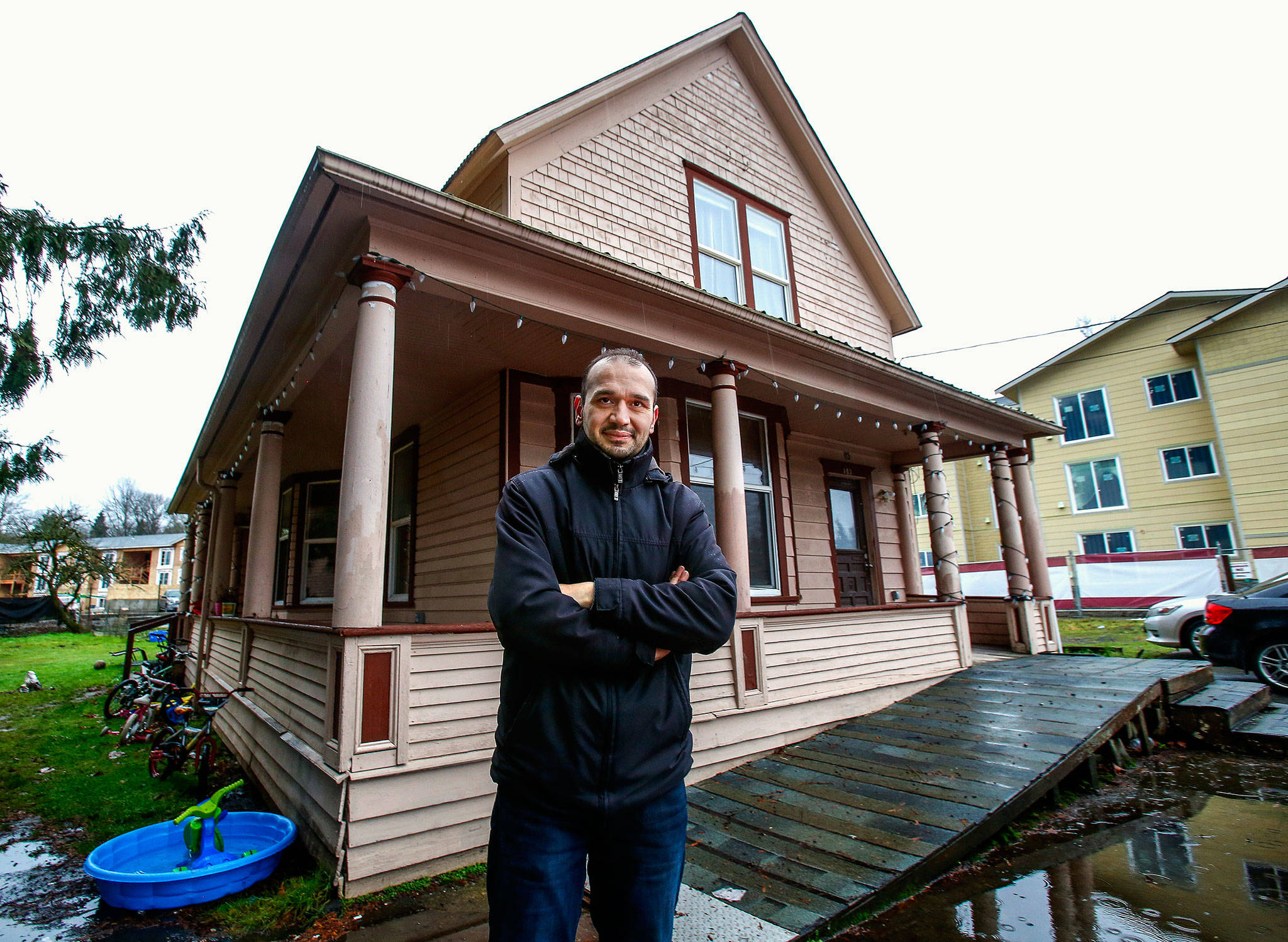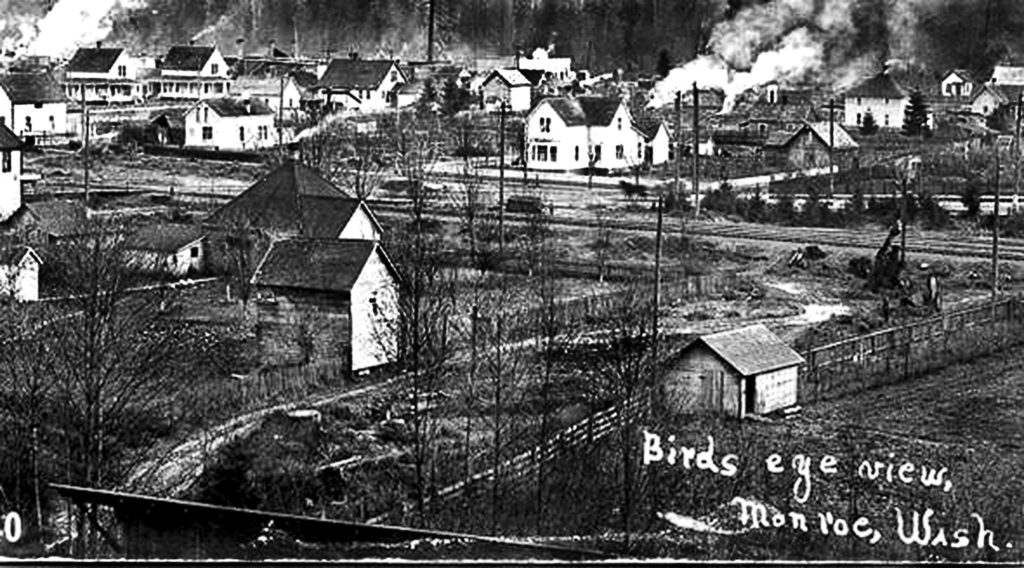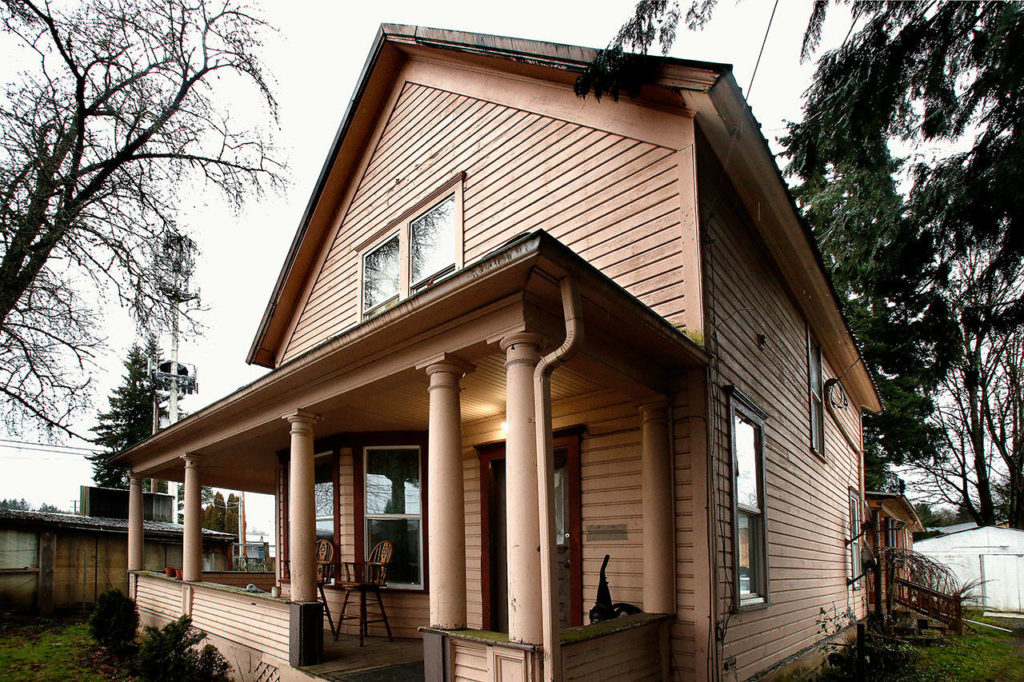To Monroe property owner Emanuel Popa, two old houses are in the way. He wants to build an apartment complex. To Tami Kinney, of the Monroe Historical Society, they’re gems from a time when a prominent family ran Buck’s Shingle Mill. To anyone willing to move the 1903 dwellings, they’re quite a deal — free.
“I can’t imagine these houses torn down,” said Kinney, a trustee of the historical society and its former president.
She’d like to see one or both of the houses, now rentals at 135 S. Ann St. and 143 S. Ann St., repurposed for retail, a restaurant, salon or Chamber of Commerce offices, “the kind of just lovely stuff we see in Snohomish.”
“Our dream, we talk about Monroe trying to be a ‘baby Snohomish.’ What we’d like to do is try to find some kind of a lot downtown, maybe on historic Main Street,” she said. The society’s museum is on East Main Street, in what was once City Hall.
Popa has owned the houses about two years, and rents out their upstairs and main floor apartments.
The original homes of Siralpha Abel Buck and his son A.H. Buck, they were crafted in a simple farmhouse style. They have wrap-around porches supported by columns, bay windows downstairs and narrow windows upstairs. Today, they’re in a somewhat industrial part of town. That’s changing with the addition of large apartment projects.
With plans to build a 16-unit building on the site, Popa wants the houses gone by September. Giving them away would save the expense of demolition. The property is near Al Borlin Park, where the Skykomish River and Woods Creek meet. The park was once called Buck Island, after the family that operated the mill.
In December, Kinney said, she presented information about the Buck houses to the Monroe City Council, hoping there might be a city lot where they could be moved.
“They are a fine example of early 20th century architecture,” Kinney said. They’re also the last structures still standing that appear in a 1906 photo in the book “Early Monroe,” by Dexter Taylor and the Monroe Historical Society. In the picture, Buck’s Shingle Mill is behind the pair of homes.
Kinney has learned about the powerful, irascible patriarch, S.A. Buck. He and his wife, Adeline, lived in one of the houses, and had five children, Mary Caroline, Ulysses, Alphus, Almond Thomas and Wallace.
“They had money,” she said, noting elaborate hardware still on the doors and molding around doorways.
Articles by Nellie Robertson, a Monroe historian and newspaper writer who died in 2013, tell how S.A. Buck not only ran his mill, but the town’s utility, the Monroe Water and Light Company.
‘There was a shingle war going on, and he was telling other companies they couldn’t use the river,” Kinney said. A 1914 volume of “The Timberman” publication said the Bucks of Monroe had business in Oregon, too, including a box factory in Eugene.
Last week, Kinney and Popa met with two sales managers from Nickel Bros., a structural moving company with offices in British Columbia and Marysville.
Estimates of how much a move could cost vary greatly. “The two Nicks,” Nick Carpenter and Nick Bonvouloir from Nickel Bros., carefully looked over the homes and found them “very solid,” Kinney said.
“Unfortunately, without knowing exactly where the destination is going to be, we cannot give a price range at this stage in the project,” Bonvouloir said by email Thursday. “It really depends on the logistics associated with the move and the route. … I can tell you, it’s much more cost effective and environmentally friendly than building new.”
The company’s website shows a number of home moving projects — a cottage, a bungalow, even a 500-ton brick mansion moved from Seattle’s Madison Park neighborhood on Lake Washington to Bainbridge Island.
Kinney said the city has been helpful. Ben Swanson, Monroe’s community development director, suggested she reach out to Nickel Bros., she said.
In the rain outside his old houses Wednesday, Popa said he “had a chance to live the American dream” when he emigrated from his native Romania 18 years ago. His computer business, E-Man Data Recovery, is on Monroe’s Main Street, and he has a Snohomish office. He owns another vintage property, Madison Hill Chapel, a Monroe wedding venue in a 1915 church building.
If his apartment project comes together, the old Buck houses will go — one way or another.
“People will probably read about these houses and think, ‘Oh my gosh, I’ve got space,’” said Kinney. “They have a term, upcycling. I love that term. Each discarded home means between 60 and 80 tons of building materials to landfills. This makes sense on so many levels — preserving beautiful old homes.”
Beautiful? They certainly could be, with plenty of money and tender loving care.
“If they could be saved, why not?” Popa said.
Julie Muhlstein: 425-339-3460; jmuhlstein@heraldnet.com.
Learn more
Information about Monroe’s 1903 Buck houses is on Facebook, on the Historic Monroe WA page. To learn more, call the Monroe Historical Society & Museum at 360-217-7223.
Talk to us
> Give us your news tips.
> Send us a letter to the editor.
> More Herald contact information.



























